How a Visual Schedule is Bringing Order to Our Home

Inspired by Simple Homeschool’s article on Creating a Visual Schedule for Kids, I realized that this was exactly what our home needed to bring some much-desired peace and order to our days.
Too many times each day, I was being asked “when are we eating lunch?” or “why can’t I watch a movie right now?” or “why do I have to do my math before I play outside?”. I was weary of the questions, and I could tell that my kids needed some more structure to our casual summer days.
Making the Schedule
I loved the idea of using a pocket wall chart where I could easily rearrange the activities in our day. Problem was, I didn’t have one nor did I want to go out and spend the money on one.
I was able to solve this fairly easily by using a preschool pocket wall calendar that I had purchased at a garage sale several years earlier. I had used it for a year, but decided doing calendar time wasn’t that important to me, and so it had sat there. I sat down with a steak knife, and slit open each of the 7 day slots to make one large, horizontal slot going across the calendar.
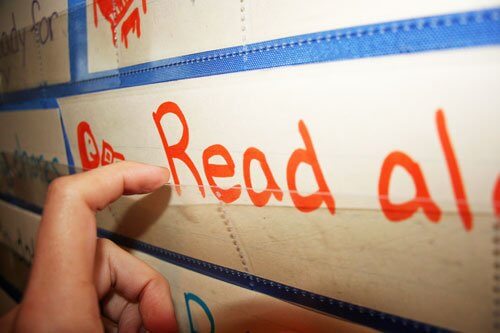
Now I had space for 7 daily activities, but I knew that I wanted more. I opted to use a package of long strips of heavy paper, intended for writing out sentences. Instead, I cut them in half with a paper cutter, so that I could make two rows of 7, giving me 14 activity slots.
When we have a rigid daily routine, it just doesn’t work (at least, not for us). Particularly in seasons with very young children, every day can look quite different and there are many elements that make up our days and weeks. I knew that I needed flexibility in how each daily routine looked, even though there are certainly threads of similarity from day to day.
I wrote out a long list of all of the various things that we do as a part of our days: meals and snacks, various learning/school activities, library trips, piano lessons and practice, playdates, grocery shopping, laundry, morning and/or afternoon chores, family time, etc.
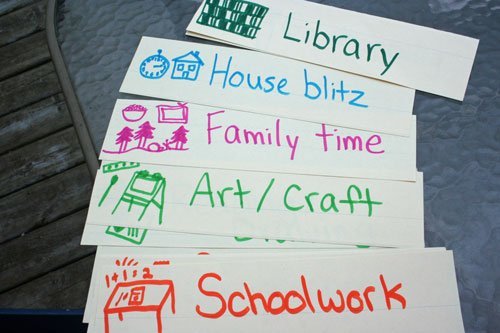
Once I had a complete list, I assigned each activity a category, such as basic daily routine (getting dressed, getting ready for bed), household work (morning/afternoon chores, laundry, house blitzes), learning activities (schoolwork, piano, read alouds, couch time, art), meals and snacks (breakfast, lunch, dinner, snack), play (backyard, free play, friends over, movie), outings (shopping, library, fun surprises, church, playdates, park), and family activities (family time, devotions).
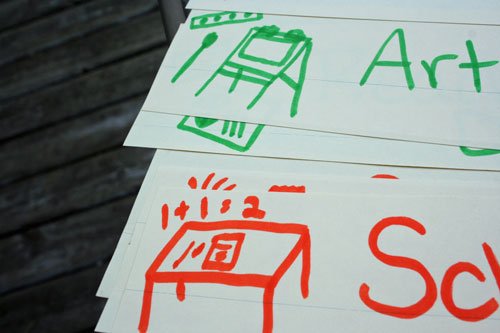
I used a different color to distinguish each category. I wrote the name of the activity and also drew a simple image to go along with it (nope, I’m not artist, but I tried!). I thought that the images would be helpful for my young non-readers to identify what was on the schedule.
Using the Schedule
Each morning, either I or my 6 year old assemble the schedule. She loves doing it and is so excited to know what is happening each day. I help her to find the correct cards and put things in a reasonable order of events.
The chart is hanging on a wall right beside our kitchen and near the play room, so it’s easily visible to all of us throughout the day.
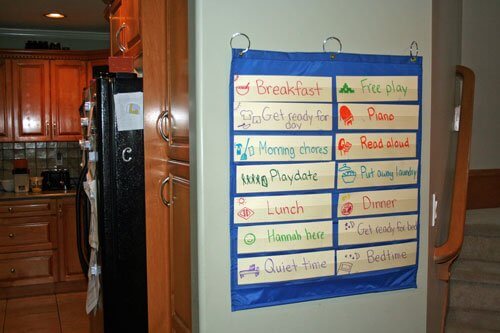
Although we have only recently implemented it, I have already seen two major benefits:
- It helps the children to stay focused on the activity at hand and there seems to be less fussing about waiting for an anticipated activity (such as a snack or going outside) when they can see that it is coming soon.
- It keeps me more accountable for how our day is progressing and whether I am sticking to what I had planned. My daughter also helps to hold me accountable by reminding me of what is on the schedule next!
One beautiful aspect of a flexible routine system like this is that if we are struggling to get everything done before lunch, we can simply switch the order of our cards, or even remove a card entirely if it just doesn’t look as though we will have time to get to it. There’s a real freedom in that.


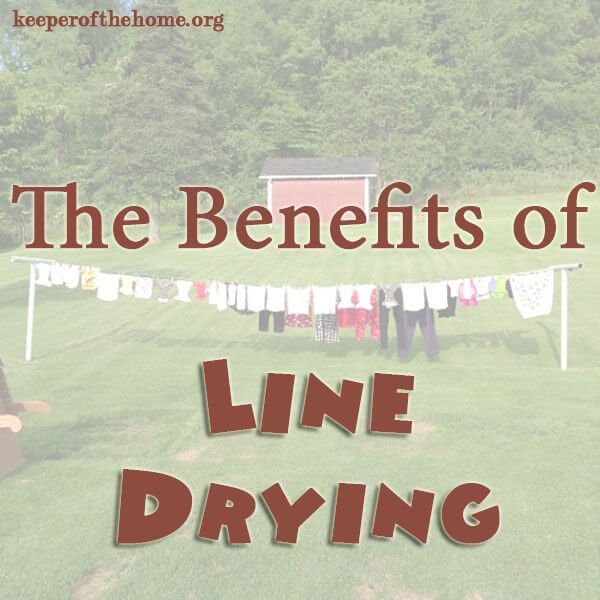



Hi Stephanie! So glad to hear that my post inspired you. The kids still love our chart, too. They read it first thing when they come downstairs in a morning!
What a wonderful idea! I am going to start doing this!
I love this idea!! But, I am unfortunately quite pessimistic about ever “getting it together” and actually having some kind of order. It seems like no matter what system or gimmick or gadget, it just never works. I’m sure this will work for many families, though…thanks for sharing (:
This is a great idea. Right now at Target, they are selling similar pocket wall schedules for $1.00/piece (in the $1 section). You would have to purchase two since they are half as large. But very cheap!
@Meghan, Thanks for this tip! I read this and was inspired–but thought: “Where am I going to find one I can afford right now….gonna make a trip to Target!!
This looks great! So many times, I let things slide in my children’s day instead of staying on top of things. Anyone ever used a chart like this with older kids? I might have to come up with something a little smaller for my space. I’m thinking homemade refrigerator magnets might work. Thanks for the motivation! Our official school year starts in under a month and I REALLY need to get organized. This year I’ll be teaching all three.
in our Early Intervention program that I work in, we recommend visual schedules like this to a lot of our families. even if it’s just for 3 major events of the day. Children learn that there is a starting, and an end to every activity and can learn to anticipate activities later in the afternoon. They are also more apt to sit through activities they don’t like as much seeing that they will do something they like afterwards.
The only suggestion i’d make is be sure your children see you make the changes to the calender. Their little brains are wired to memorize these kinds of things, and a change for no reason is hard for them to follow. If you switch activities, rearrange, move or remove, be sure they see you doing it so they can mentally adjust their day with you.
great repurposing!
love, love, LOVE this! thanks for the idea. Wanting to get started on this right now 😉
We are using visuals from MrsRiley.com b/c my son has Down Syndrome and needs the visuals. I am struggling a little but it definitely cuts back on repetitive questions. Unfortunately I am a free spirit and don’t always know what I’m doing!
This is awesome. Want to start this right now… I hope a blogger gets a bright idea to design some cute printables for this visual calendar! That would rock!
This looks great except I don’t have anything I could use as a pocket chart. Also, I would be wondering if this would just be another thing for me to try to implement and feel like I am failing on. It seems so many intereuptions come up with kids. I know I can remove one of the things but I can forsee that being a big issue for my oldest perfection oriented child. She is in an overreacting to everything stage. We’re working on it but its hard.
I don’t know, I am a little apprehensive of how this whole year is going to go, lots of changes (husband’s job changes, possible move eventually, baby #3 in the late winter, and other things going on. Summer is such a laid back time for us with lots of other things to do. September comes and then I need to get things together a bit more. Can you think of any way I can try this without a pocket chart?
I’m also curious to see what you are using for homeschooling this year. I’m always interested to see what other moms with children around our stage are choosing to see what works for them. I know everyone is different. I wouldn’t be starting so soon if my child didn’t need it, but she does and its very confusing trying to figure it all out. She’s not at any one level and usually I try to get something for her only to find out she needs a different level than I thought. We’re mainly working with grade 1 and 2 level stuff.
@Nola,
We use velcro, you can stick one side of the velcro to whatever you wrote your scheduled item on and the other half to poster board, manila folder, butcher paper or even the wall. We found the door to his room was the best place for him to look at his schedule, so we just stuck the velcro right to his door.
Nola, u could just try only “posting” the next 3 activities that you know you’ll be doing. Then gradually add more as you get into the habit of posting it.
I used an old cheap cookie sheet. I kept all the different options on one side and would move only the ones I needed for that day or morning on the other side. I let my son use a magnet to put beside the next activity. I kept this on our table or counter by his homeschool stuff. So that he would know what we had finished and what was next. I made sure to vary the activities so that we weren’t only doing homeschool stuff straight though. We may do 2 school typ activities then make bread then 1 homeschool then he could play outside then 1 homeschool thing then lunch. He was able to move around a lot more than he would have been able to at school. And this helped him know what to expect.
We use a visual schedule for my son that has special needs. We use “picture pecs” these are simply drawings with or without words. It really cuts down on frustration when he can see what’s next. It also works great with a first/then model. First letters worksheet then computer time. We have started using it with our preschooler as well.
That looks great, Stephanie! We’ve done something like that in the past, but I’m such a rigid scheduler that by now that kids just “know” what comes next. 😉 I’m going to drag out my velcro chart once we “start kindergarten” with our oldest this fall. I think he could use some sight word schedules. 🙂
@Nola – We never used the pocket chart (I never had room to hang it out of reach of littlest fingers) but I did have a strip of velcro, so we took pictures of each thing to do (breakfast, schooltime, art, swings, etc), laminated it, and then stuck it on the velcro line. Worked just as well as the pocket chart for rearranging if need be, but I was able to post it high up out of the way, and they could still see “what came next”. It works fantastically well for non-readers. [I actually learned to do it while working in a AS-inclusive preschool. It was a great resource].
@Meg, Oh wow that sounds really neat! I also don’t have a lot of room for a big pocket chart (open concept homes are great except for wall space!!!) I might have to try that. I’ll see what other ideas there are if any but this one sounds like it might really work. Thank you!
@Nola, You can put magnetic tape on the back of the cards and put them on the refrigerator 🙂 You can also write the items smaller so that you won’t need the entire refrigerator. 🙂
@gogardengirl, That is another really good idea. I don’t know why I didn’t think of it! I honestly don’t have any other space than one other location on the main floor but I was hoping to do something else there. I just moved a bookshelf and was thinking oh no, there goes the last of the wall space! 🙂 Thanks!
@gogardengirl, and actually I forgot that I could just cut up those free magnets we get a lot of. My husband did this to make me a calendar to go on the fridge and it works really well. He just cut them up and put it on the back of the calendar. I wanted one and they were like $30 what I wanted so he made me one for the cost of the paper!
@Nola, You can put magnetic tape on the back of the cards and put them on the refrigerator 🙂 You can also write the items smaller so that you won’t need the entire refrigerator. 🙂
We just implemented this idea at our house. My son loves schedules, and it’s helping him a lot to know what to expect during the day. It’s also cut down on the “I want to watch a movie!” requests since he knows when that will – or will not – happen.
I really like this. I too have used visual cues to remind my son of what to do in the morning and at bed time. I never thought of doing it as a whole family schedule. I am wondering if I could find something like that at the craft store in their teacher section…
Thank you, thank you, thank you for this post! I am in desperate need of some kind of schedule for my young family! The tip from one of your readers to get this from Target has inspired me to take a Target trip sometime today!!
Something someone else recently suggested to me was to make a snack chart. My 3-year-old is pretty strong-willed. I’ve read and been told that giving her some ownership/letting her make simple decisions can help. Someone suggested we make a snack chart that gives 3 choices for a snack that she can pick out herself.
Now a question that is somewhat related….when does everyone start homeschooling? I have a 3-year-old (and a 9-month-old). Is 3 too young? Just right?
Thanks again! 🙂
Thank you for this great idea. My oldest needs to know everything that we are doing and when it’s happening with endless questions. This will be quite helpful. We also have non-readers who can benefit from this. I will need to run to Target I guess. =) I also liked the velcro idea. Both these ideas could probably be used for many different things.
Thank you again,
Jessica
The time in the morning before school and work was always stressful for my ADHD daughter. Nagging and questioning her if she was ready did not work well, so we made a visual checklist for her morning routine. It was wonderful–no more nagging and she only went to preschool in her pajamas once! I teach 2nd grade and my students check the schedule everyday–I don’t need to point it out, they just automatically look to see “what’s up”. We all like to know what to expect and the visual schedules are perfect.
I totally agree. Kids need visual reminders of what’s going on, or else they think that mom is arbitrarily choosing to wreck their playtime fun. It’s important for them to know what’s coming up ahead to help transition them to the next activity.
We do this in the summer, although I do it slightly differently and not every day. I write up cards with chores and fun activities and lay them face down. The kids each take turns picking a card and posting it up, and that creates the order of the day. They love it when their priorities get chosen before mine – it just makes the day more fun and the kids seem to enjoy the activities they usually wouldn’t.
Sometimes I do it with mainly chores or schoolwork (during the school year) and they think it’s a game… they still ask for it.
Hes
@Hester, I love that your kids think it’s a game. Does the novelty ever wear off? Abbie is still thrilled with ours and gets excited about it every day, but we haven’t been doing it very long yet.
Such a great idea. You’ve got me thinking about how I can build something similar for us. I’m not naturally a very organised person, and need all the help I can get!
@Emma, I’m not naturally very organized either. It’s something I have to work really hard and consistently at. But I do find this schedule easy to maintain and quite helpful!
I love this! We just suddenly moved and with the little 3 month old now, my preschooler really needs a routine again. This will be great! She too is always asking me when about different things during the day. Thanks for sharing!
This is exactly why I post our menus for the week, including an afternoon snack. I never have to hear “What’s for lunch?” when they can just look at the chart. Plus, with homeschooling a large brood it’s nice to have meals be a ‘no-brainer’. I need all the brain cells I can get for teaching algebra 🙂
What a FANTASTIC idea! My four-year-old is constantly nagging me to watch TV. I wonder if she could see when TV is on the schedule if that would help her.
I went to Target and found the $1 pocket calendars (and a whole bunch of other stuff). I bought three “just in case.”
BUT I am now trying to figure out how to visualize our schedule. I know I need to keep it simple. BUT, I am homeschooling one (1st grade), entertaining two others, and nursing the youngest. Most of the time (at least during school time) all 5 of us are doing different things: one might be in rest time, another reading with me, and the third reading independently (for example). Also there are times during the day when I am doing household chores and they are watching TV. And the youngest has a nap while the older two do school work and/or take rest time.
My question is – how do I visualize these different schedules without making it too complicated? I’m anticipating if I put nap time on the board the older two would revolt… but if I leave it off my napper will think he gets off.
I thought about just putting “school time” on the board, but is that specific enough? It takes up most of our day so it might not tell the kids anything more than what they already know.
Any suggestions?
@Lisa Neumann, I have the same issue, with us doing different things at different times. I decided to keep the schedule more simple and vague, and keep it focused on what the children are doing during those times when our activities diverge. So if they’re playing in the backyard while I cook dinner, I put backyard on the schedule. If they’re working on schoolwork, I just put schoolwork rather than math, then science, then phonics, etc. (although I do separate it into Couch Time, when we read and do devotions, School Time, when we’re at the table, Special Projects, Piano, etc.).
And for naps, I just use the term “quiet time”. That covers everyone. The littlest one naps. The middle one plays quietly in his room. The oldest quietly reads or works on an art project. And mama usually works on her laptop. So it really is “quiet time” for us all!
@Erin@TheHumbledHomemaker, For us, we started homeschooling at 3, but it was very casual, and a little bit more just for something to do and to help me get accustomed to homeschooling, rather than because I felt my daughter truly needed to start schooling at that age.
With my second, I have no done anything formal yet and he turned 4 in May. We will begin just a little bit of stuff for him in the fall, but I think that I have begun to feel that later might be a bit better. By all means do activities that involve learning, read lots, have engaging discussion, go intriguing places, etc. but I wouldn’t worry so much about actual “schooling”. When kids are raised in a rich learning environment, they naturally learn much more than you think, and they will be prepared to grasp foundational skills very quickly and easily when you do begin formal teaching.
When you start with really young children, sometimes you only frustrate yourself and them. But I think it can be a very individual thing, depending on each child’s personality and readiness, as well as the individual mom. Pray about it, talk to your husband, consider your child, and do what seems to be best for your family! 🙂
Love, love, love this idea. I am so going to start it in my home next week when my oldest starts back school. I am going to “homeschool” my 3 year old (I am using that term very loosely since its preschool), but think that it would help he and I feel like more we productive.
Great ideas – thanks for sharing.
Alison
http://www.AtTheEndOfTheDrive.blogspot.com
I loved this idea when you first posted it. It did take me a little while, but I came up with my own version. If you would like, you can see it here, http://thekeeperofourhome.blogspot.com/2011/08/new-schedule.html
Thank you for the idea!
Blessings,
Glennda
I love this, but like a lot of people I am on a tight budget and I wasn’t able to find the pocket wall schedules so I improvised. Instead of clip-art, I googled coloring pages for every item I wanted to include. ex: brushing teeth coloring page or bedtime coloring page. I copied them into Microsoft Word, shrunk them, added words when necessary and printed them. Printing a coloring page instead of clip art saves me ink. So I just colored them. I don’t have a laminator (YET) so for now, I’m just putting them on the fridge using the kids’ letter magnets. Maybe soon I’ll find the pocket wall hangers or I’ll laminate them and add magnetic tape. Thanks for the idea! I hope this helps my 2 and 3 year old feel more at ease and less inclined to ask for the tv after every activity.